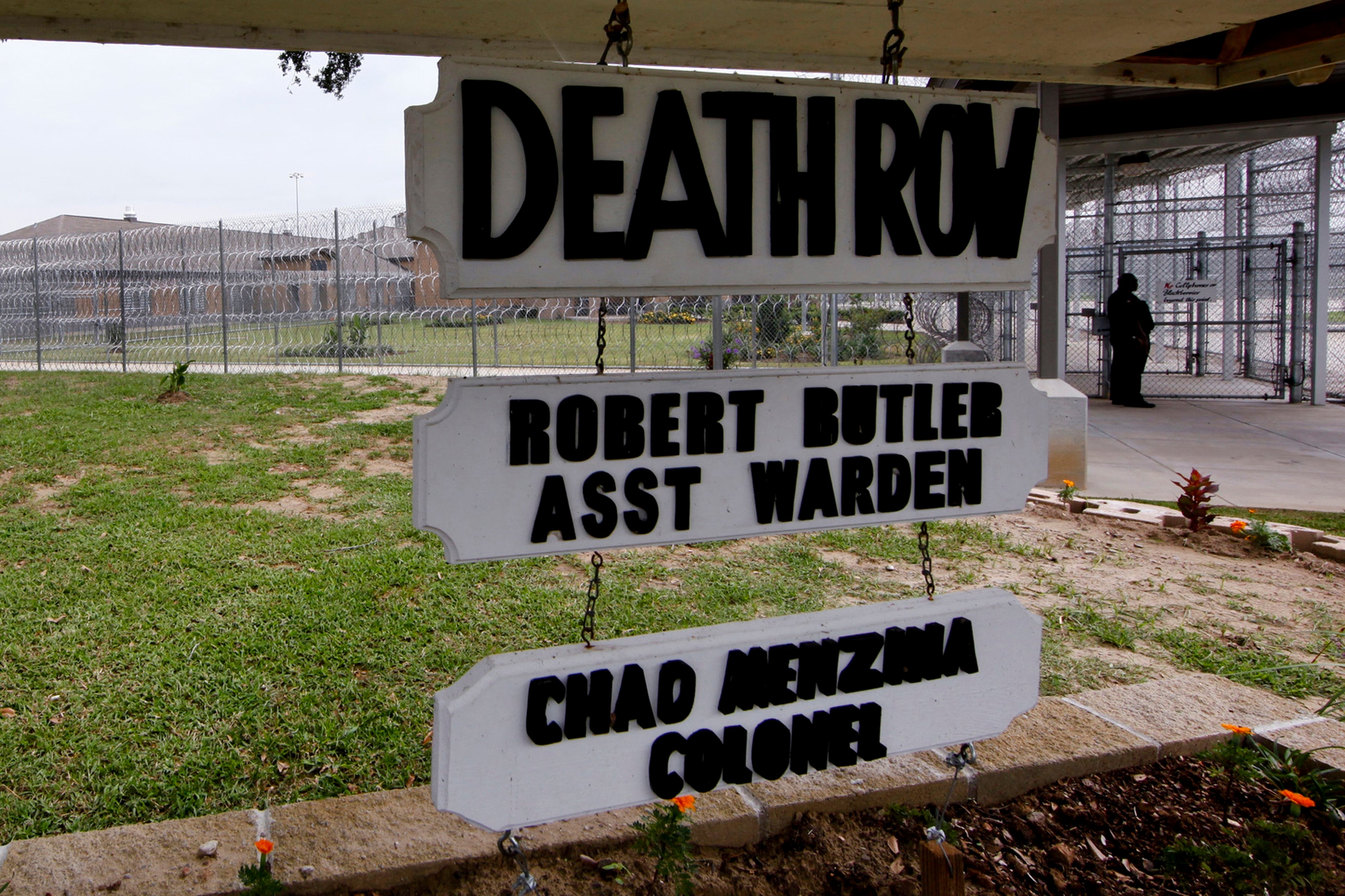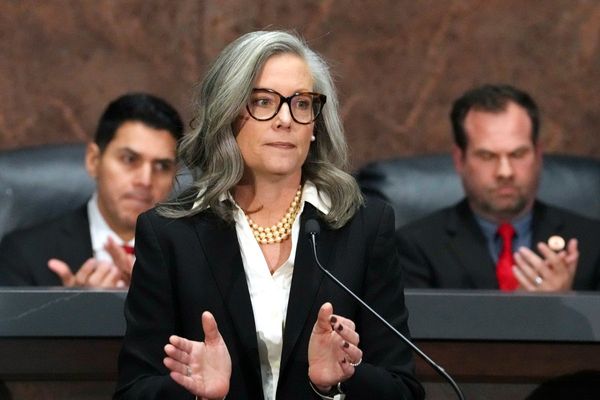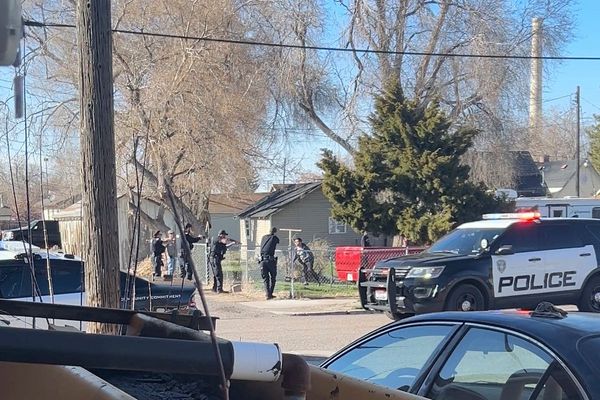Louisiana executed death row inmate Jessie Hoffman with nitrogen gas despite last-ditch efforts by his legal team claiming the method violated his religious freedoms.
Hoffman, who had been convicted of the brutal rape and murder of a 28-year-old woman in 1996, was put to death at Louisiana State Penitentiary in Angola at 6:50 p.m. local time, Department of Public Safety and Corrections Secretary Gary Westcott announced during a news conference Tuesday evening.
“It was flawless,” said Westcott. “It went about as good as we can expect.”
Hoffman, 46, spent the day visiting with family members, attorneys and his spiritual adviser. He declined a final meal around 6:12 p.m.
Shortly thereafter, he was escorted to the execution chamber, where he declined to make a final statement at 6:20 p.m., and placed on a gurney. Executioners then placed a nitrogen gas mask on his face. Officials administered nitrogen gas, which flowed for 19 minutes.
It marked the first nitrogen gas execution in Louisiana and the state’s first execution in 15 years. Three other states — Alabama, Mississippi and Oklahoma — allow nitrogen gas executions, but only Alabama had previously used the method.
Hoffman’s execution had been stayed by 19th Judicial District Court Judge Richard Moore until 9 a.m. CT Tuesday, pending a hearing. A Baton Rouge judge overturned the temporary restraining order in the early afternoon.
After that, it was up to the U.S. Supreme Court to intervene. The case was declined around 7:00 p.m. ET in a 5 to 4 vote. Justices Neil Gorsuch, Sonia Sotomayor, Elena Kagan and Ketanji Brown Jackson Jackson dissented.

Attorneys asked the court to consider whether the use of nitrogen hypoxia violated Hoffman’s religion under the Preservation of Religious Freedom Act, a state law that says the government shall not substantially burden a person’s religious freedoms unless the act is in government interest.
The inmate claimed nitrogen hypoxia would interfere with his religious right to do “meditative breathing” as he is put to death. Hoffman was a Buddhist.
“Meditative breathing at the time of death carries profound spiritual significance and the terror state created by forced inhalation of nitrogen makes that practice impossible,” Hoffman’s attorneys told the court.
The Louisiana attorney general’s office responded saying the state has no other method currently available as lethal injection drugs cannot be obtained and there is no functioning electric chair. Louisiana legally allows executions via nitrogen gas, lethal injection and electrocution.
Republican Governor Jeff Landry authorized nitrogen hypoxia executions last year.
Additionally, Hoffman never argued that “there is a legally appreciable difference between his breathing as he fades into unconsciousness by nitrogen hypoxia and his breathing as he would fade into unconsciousness after being shot by a firing squad,” state attorneys argued.
Hoffman spent eight months fighting the nitrogen gas method.
“Jessie Hoffman suffered because the state chose to use the end of his life as an experiment,” his attorney, Samantha Pourciau, said in a written statement after his execution.
“It was gruesome and prolonged and the very thing that our constitution was designed to protect us, as Americans, from enduring — the very thing our country’s framers thought would set us apart from the nation we sought to leave,” she added.
“Instead, Louisianans will wake up tomorrow knowing what our state has done and reading about a killing that inflicted psychological pain, suffering, and terror.”
A court sentenced Hoffman to death by lethal injection in 1998, about two years after he murdered Mary “Molly” Elliott in St Tammany Parish. Elliott had been getting ready to go on a date with her husband the day before Thanksgiving when the crime occurred.
She left her office in the French Quarter and headed to her car. That’s when Hoffman, a parking lot attendant, kidnapped and raped her. She was then fatally shot in the head. A duck hunter found her nude body on the East Pearl River along the Louisiana-Mississippi state line on Thanksgiving Day. Hoffman was 18 at the time of her murder and was on death row for 27 years.

Despite the horrific crime, one of Elliott’s relatives begged for a pardon ahead of the execution.
"I want my opportunity to speak as a victim's family member in the clemency process before Jessie is executed and am distraught that my voice cannot be heard," wrote Kate Murphy, Elliot’s sister-in-law, in a letter submitted as part of a pardon board hearing. "Executing Jessie Hoffman is not justice in my name, it is the opposite."
Louisiana Attorney General Liz Murrill told reporters following Hoffman’s death that she had been in direct contact with Elliott’s immediate family members who were not opposed to the execution moving forward.
“They are grateful to have finality,” she said. “What was frustrating for them is that it took 30 years.”
Hoffman expressed remorse to Elliott’s husband, parents, and other family members in a 2023 clemency petition.
“To Mr. Elliott, to Molly Elliott’s parents, and to all those impacted by such a senseless and painful loss, I want to say that I am extremely and genuinely sorry for all the pain that my very selfish, horrible and heartless acts caused you all,” Hoffman wrote.
The use of nitrogen gas has come under intense scrutiny by anti-death penalty organizations and the United Nations, which last year determined the method could constitute torture, violating international human rights treaties ratified by the U.S.
In 2024, Alabama became the first state to execute an inmate using nitrogen gas when it put Kenneth Eugene Smith, 58, to death.
Smith was strapped to a gurney and fitted with a mask and breathing tube that slowly deprived him of oxygen. During the 22-minute-long execution, Smith shook and writhed within restraints on the gurney.
Louisiana has not made its nitrogen gas execution protocols public, meaning that attorneys and Hoffman did not entirely know what the execution would entail.
Moments described by Seth Smith, the Louisiana prison’s chief of prison operations, resembled media accounts of prior nitrogen gas executions.
“He did move. He did shake very briefly,” Smith said, noting the movements were part of an involuntary response to dying. He did not believe Hoffman was conscious by that point.







